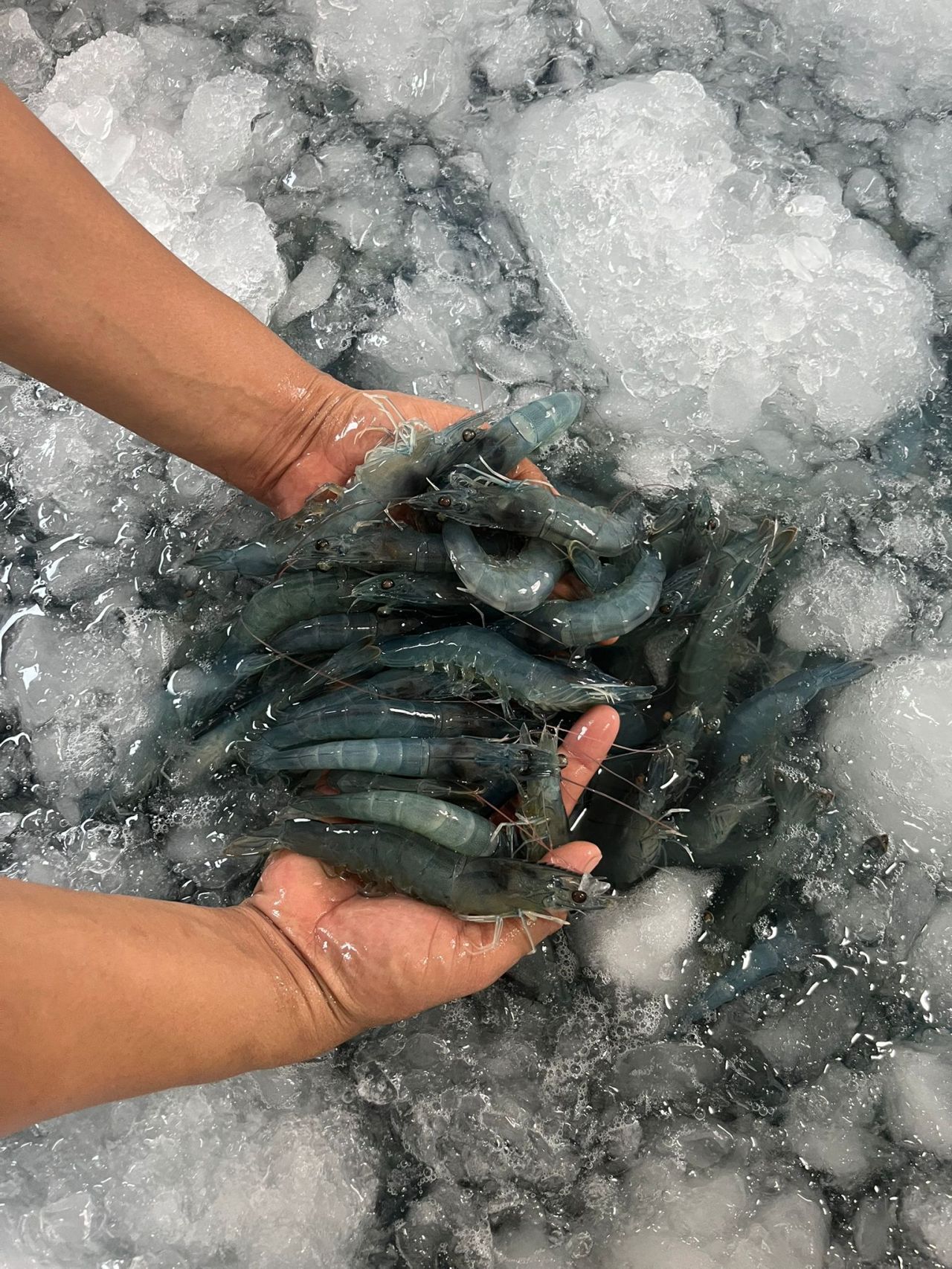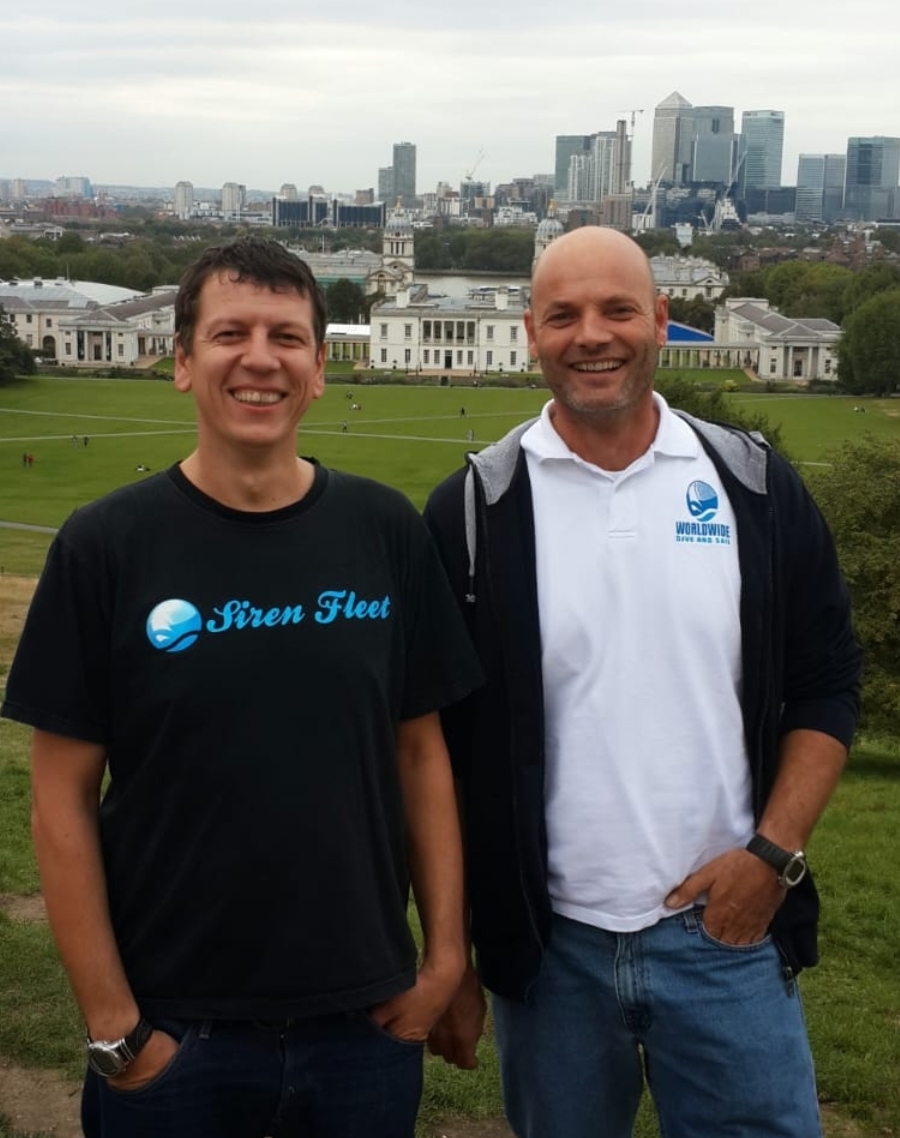The Sustainable Shrimp™
Southeast Asia Pilot – September 2025
Antibiotics used in the shrimp industry affect their efficiency in humans and result in antibiotic resistance, a global health threat. Non-native species of shrimp that escape into the wild impact native populations by transmitting diseases to, and competing with, native stocks. Industrial shrimp farming has been a major cause of destruction of mangrove wetlands, vital for wildlife and coastal fisheries. Enter The Sustainable Shrimp™ – a project so driven by love of the oceans that the Southeast Asia Pilot team just had to bring it to our readers’ attention.
The Story of The Sustainable Shrimp™
The Sustainable Shrimp (Thailand) Company was born not in a boardroom, but underwater. Its founders, Frank van der Linde and Mark Shandur, were scuba divers in Phuket. They spent their lives exploring coral reefs and marveling at the biodiversity of the sea. They had also seen its decline: overfishing stripping the oceans bare, mangroves torn down for ponds, and antibiotics poured into shrimp farms. From those dives came a radical idea – what if we could enjoy shrimp without harming the ocean at all?

Shrimp – the worst culprit
The journey began with land-based systems for raising marine fish, designed to prevent pollution and disease. But the deeper the divers looked, the more alarming the reality became. Aquaculture was one of the largest drivers of ocean depletion; millions of tons of wild fish are caught every year just to feed farmed species. And shrimp – already infamous for mangrove destruction, abandoned disease-ridden ponds, and poor environmental practices – was the worst culprit.
Something had to change. The divers knew that if shrimp could be farmed sustainably, it would prove that aquaculture could have a future. Thus, The Sustainable Shrimp™ was created – not as a marketing slogan, but as a promise.
No antibiotics, no diseases, no escapes and no impact
The difference starts with how the shrimp are grown. Instead of open ponds, the company uses Recirculating Aquaculture Systems (RAS). These comprise high-tech tanks where water is constantly filtered through UV, ozone, and bio-systems until it is as pure as drinking water. No antibiotics, no escapes, no impact on mangroves. Covered tanks keep temperatures stable and diseases out, while the entire system can be reused endlessly without scarring the land.

Conventional farms accelerate the collapse of wild stocks
Just as important is what the shrimp eat. Conventional farms rely heavily on fishmeal and fish oil, accelerating the collapse of wild stocks. The Sustainable Shrimp™ took another path, developing its own feed made from insect larvae protein and algae oil – nutrient-rich alternatives that deliver the same Omega-3 benefits without taking a single fish from the sea. By 2026, every shrimp will be raised entirely on this diet, closing the loop of true sustainability.
Scalable, replicable and environmentally sound
What began as a small group of divers with a dream has grown into something much larger: a model for the future of shrimp farming. Scalable, replicable, and environmentally sound, The Sustainable Shrimp™ proves that it is possible to feed the world premium seafood without sacrificing the oceans.
For its founders, it is more than farming. It is a pledge to the seas they love – and a blueprint for how aquaculture can finally become part of the solution.
⇒ ⇒ ⇒ Return to Southeast Asia Pilot – 7th Edition.
⇒ ⇒ ⇒ ORDER Southeast Asia Pilot – 7th Edition in print or digital formats.
Southeast Asia Pilot and Phuket Publicity Services do their best to ensure that the information on this website is accurate. However, good seamanship demands that seafarers check critical information carefully with relevant sources to ensure it is up to date.FacebookLinkedInInstagram






